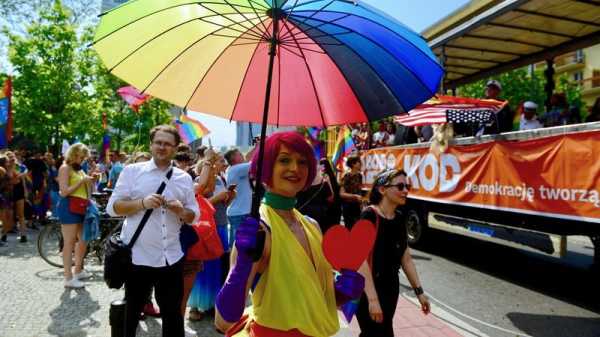
In her first term, European Commission President Ursula von der Leyen coined the term ‘Union of Equality’, introducing the principle of intersectionality as a policy guideline at the European level for the first time. Now, in her second term, she wants to stick to it, but what does this mean and how can equality for all be achieved across Europe, writes Katrin Lange.
Katrin Lange is the project lead and research officer at the Observatory for sociopolitical developments in Europe
In her political guidelines, von der Leyen made ’equality for all and equality in all of its senses’ one of the main priorities of her Commission 2019–2024. To implement this union of equality, Helena Dalli was appointed as the first Commissioner for Equality. She was given a Cabinet and a Task Force on Equality.
To achieve this, the EU aims to put in place mechanisms, policies and actions that challenge the structural discrimination and the stereotypes that often exist in societies. This will create the conditions for everyone to live, prosper and lead regardless of differences based on sex, racial or ethnic origin, religion or belief, disability, age or sexual orientation. An equal union will also ensure that decision-making takes into account the needs of all, and tackles intersectional discrimination.
This is where the concept of intersectionality comes in, as it allows for the consideration of the interaction of social inequalities and power relations to be taken into account. Intersectionality describes the co-existence of different forms of discrimination. It focuses on the impact of multiple and intersecting forms of discrimination, which can influence and reinforce each other and particularly affect the lives of vulnerable individuals and groups, such as black women, children with disabilities or LGBTIQ people.
To build a union of equality, among others, five strategies have been adopted: the Gender equality strategy 2020–2025, the LGBTIQ equality strategy 2020-2025, the EU anti-racism action plan 2020–2025, the EU strategic framework for equality, inclusion, and participation of Roma 2020-2030, and the Strategy for the rights of persons with disabilities 2021-2030.
All these strategies aim at combining targeted measures and mainstreaming equality in other policy areas. They also aim to collect reliable and comparable data to support evidence-based policy-making, to engage with stakeholders, to pay due attention to intersectionality, to invite member states to develop national strategies or action plans and to communicate EU equality objectives at national, regional and local level, to mobilise EU funds to support actions that promote equality and combat discrimination, to combat stereotypes, and to commit the Commission to leading by example.
How to further build up a ‘Union of Equality’?
In her political guidelines for a second term as President of the Commission, Ursula von der Leyen has committed herself to continuing the union of equality after June 2024. In particular, she wants to maintain the position of a Commissioner for Equality in her Cabinet. In addition, three strategies that expire in 2025 will be continued: the Gender equality strategy, the LGBTIQ equality strategy and the EU action plan against racism.
The mandate of the commissioner for equality should not only be continued but also strengthened with sufficient financial and human resources and more competencies. A permanent task force for equality is also important because it ensures the involvement of specific staff from all other EU bodies.
With von der Leyen’s commitment to post-2025 equality strategies, the key questions are how to strengthen the intersectional approach and whether sufficient resources and political will will be put behind her equality agenda. There is therefore a need for a more thorough reflection of an intersectional perspective in all strategies. There is also a need to identify and define clear objectives and milestones for equality policies at the European and national level.
In addition, intersectional policy-making relies on reliable and comparable data that takes account of structural discrimination and its intersections. Existing structures for equality mainstreaming should be strengthened and networked in terms of their reach and resources.
Strategically, it is important not to downplay one’s vision in anticipation of a possible backlash. This is even more important in the current climate, given the success of reactionary forces in influencing public discourse and policy in the EU. The threat that they pose to the EU must be taken seriously and seen as an organised, well-funded attack on human rights and democracy that seeks to extend power by targeting the rights of vulnerable groups. Equality for all is a complex political project, and it is far from being achieved. However, with the Union of Equality, important steps have been taken in the EU and should be continued.
Source: euractiv.com



